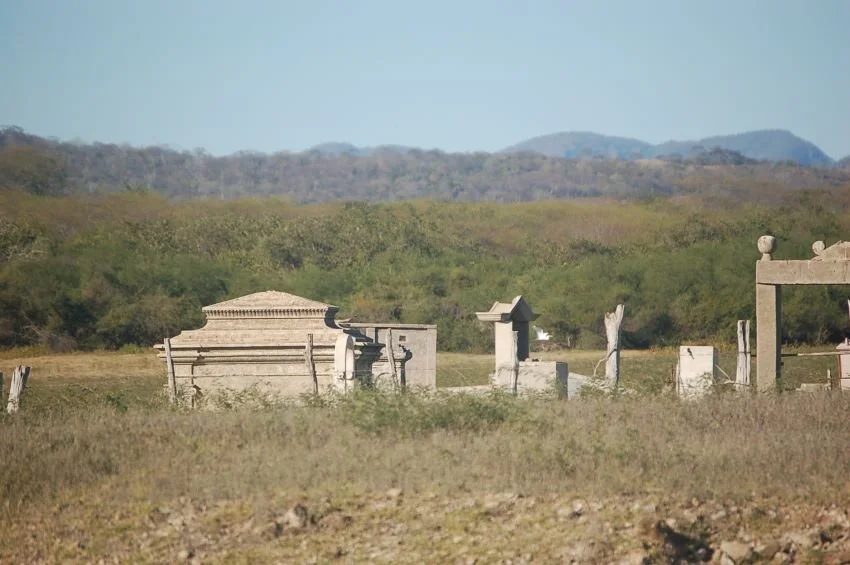Seven Odd Things You Can Expect to See at Lake El Salto
While you’re likely headed to Anglers Inn Lake El Salto first for the great fishing, and second for the exceptional service, if you actually take the time to appreciate your surroundings you’ll learn that it’s a bass fishing experience unlike any other. Even if you’ve traveled extensively with a rod and reel in the United States, El Salto’s full sensory overload may produce some questions in the form of “What the hell did I just witness?”
Remember, there are few stupid questions. Come to fishing trave with humility and you’ll leave a much happier camper. Nevertheless, we’ll set out in this article to help you understand and anticipate scenes that might occur.
Scenery Question Number One: Am I really fishing around a graveyard?
Answer: Yes. When El Salto and Picachos were impounded, multiple villages were flooded, leaving schoolhouses, house foundations, and yes, tombstones behind. While most of the cemeteries are out of the water in low water conditions, when the water is up you may find yourself fishing in and around them.
Follow-Up Question: Is it bad luck to fish in or around a graveyard?
Answer: You need to decide that for yourself. If you feel uncomfortable, tell your guide that you want to leave. For the record, we’ve caught some quality fish in those zones.
Scenery Question Number Two: Why are there so many chest freezers on the bank?
Answer: From October through April, the tilapia cooperative plies their trade on the lake. Keeping the tilapia population healthy but also in check is key to the quick growth of the lake’s bass. Many of the tilapia anglers stay at the lake for days at a time and need to keep their catch fresh until someone picks it up. Thus they keep unpowered-but-insulated chest freezers in their lakeside camps to keep the fish fresh.
Scenery Question Number Three: What are those funny-looking raccoons on the bank?
Answer: They’re coatimundi (AKA, Coati), which indeed do have ringed tails and paws like raccoons, just in a more slenderized package. We tend to see them moving in packs in the late afternoons along treelines and in the backs of pockets.
Scenery Question Number Four: Who put those floating bales of hay in the lake?
Answer: As noted in the response to question number two, the ultra-healthy tilapia fishery is vital to the local economy as well as to the bass fishery more generally. Accordingly, the cooperative does everything they can to keep these food fish healthy. That entails putting out these bales of hay that serve as a food source for tilapia, which eat various plants and small invertebrates.
Scenery Question Number Five: I was told that there was no vegetation on the lake. What are those green “lily pads” floating around?
Answer: When the lake level gets high in the later summer and early fall, floating hyacinths come down the rivers into the lake. Sometimes there are tons of them, and other years there are quite a few fewer. They move around with winds and currents, so a pocket that is empty one day may be full the next. While we’ve caught a few fish frogging and flipping the mats, not as many as we would have expected. Sometimes the hyacinth lines themselves work as a form of cover/structure and two anglers working together can have a great day churning spinnerbaits or Chatterbaits along the edges.
Scenery Question Number Six: What’s up with the floating bass?
Answer: Seemingly at least once per trip we’ll be driving down the lake and there will be a large-to-very-large bass floating belly up. When we stop, the fish has almost always choked to death by trying to swallow a tilapia that was simply too large. On a few occasions we have happened by soon enough to save the bass, the tilapia, or both.
Scenery Question Number Seven: What are those noisy pheasant-like birds fighting in the shoreline trees?
Answer: They’re called chachalacas and yes, they are extremely “social.” Apparently they must not taste very good or that plus their noisiness would’ve made them an easy target. The bird life in Sinaloa is pretty amazing – and even if you like that more than fishing you might find a trip to Anglers Inn to be worth your while.










